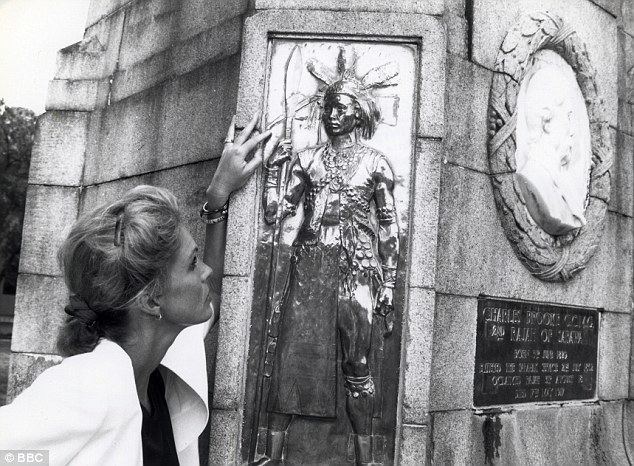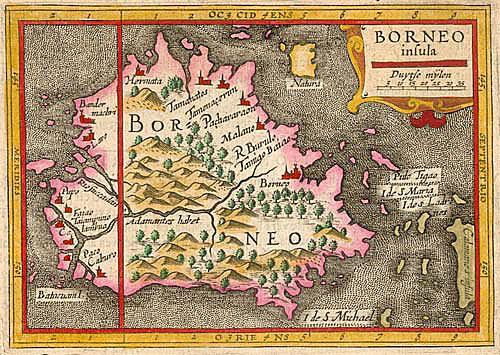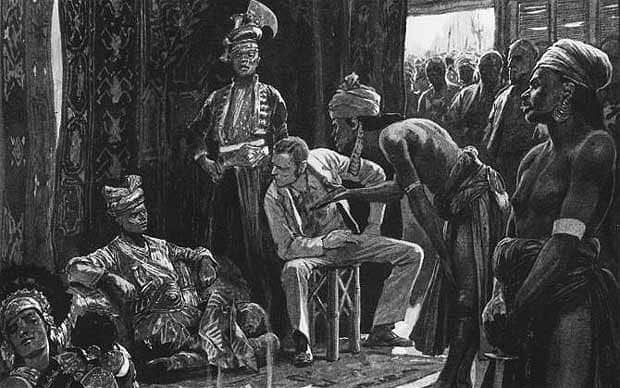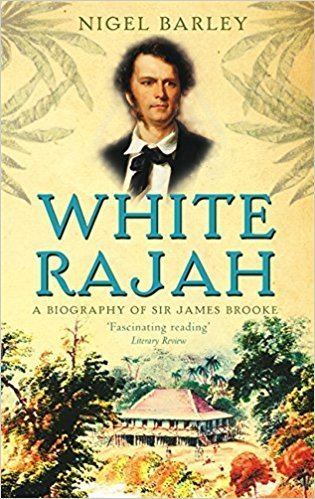Abolition 1946 | Formation 1841 | |
 | ||
Twilight of the white rajahs by alex ling
The White Rajahs were a dynastic monarchy of the English Brooke family, who founded and ruled the Kingdom of Sarawak, located on the island of Borneo, from 1841 to 1946. The first ruler was Englishman James Brooke. As a reward for helping the Sultanate of Brunei fight piracy and insurgency among the indigenous peoples, he was granted the landmass of Sarawak in 1841 and received independent kingdom status.
Contents
- Twilight of the white rajahs by alex ling
- Rulers
- Titles
- Line of Succession
- Government
- Cession to the United Kingdom
- Legacy
- Heraldry and emblems
- References

Based on descent through the male line in accordance with the Will of Sir James Brooke, the White Rajahs' dynasty continued through Brooke's nephew and grandnephew, the latter of whom ceded his rights to the United Kingdom in 1946. His nephew had been the legal heir to the throne and objected to the cession, as did most of the Sarawak members of the Council Negri.

Rulers

Sarawak was part of the realm of Brunei until 1841 when James Brooke was granted a sizeable area of land in the southwest area of Brunei – around the city of Sarawak (now Kuching) and the nearby mining region of Bau – from Bruneian Sultan Omar Ali Saifuddin II. He was later confirmed with the title of Rajah of the territory. The Kingdom of Sarawak developed and expanded during the rule of the first two White Rajahs, growing to occupy much of the north region of the island of Borneo. The Brooke administrations leased or annexed more land from Brunei.
The White Rajahs were all related:

James and Charles had short grammar school educations, Vyner, Bertram, and Anthony went to public schools and Cambridge University (but without taking degrees). All but Anthony died in England and are buried at Sheepstor parish church, Devon. Anthony Brooke had his ashes interred at Sheepstor as well as at the Brooke Family graveyard in Kuching, as per his last wish.

The White Rajahs pursued a policy of paternalism, with the goal of protecting the "native peoples" (indigenous peoples) from "capitalist exploitation". While James Brooke laid much of the groundwork for the expansion of Sarawak, his nephew Charles, the second rajah, was the great builder. He constructed public buildings to serve welfare, such as a hospital, in addition to forts. He worked to extend the borders of the state.

Vyner Brooke instituted significant political reforms during his tenure. He ended the absolute rule of the Rajah in 1941, before the Japanese invasion of World War II, by granting new powers to the Council Negri (the parliament). Bertram co-ruled with his elder brother, taking turns of 6 – 8 months in charge of the country each year. By 1939 Bertram's son Anthony had taken the reins of government, and it was with considerable controversy that Vyner attempted to cede Sarawak to Britain secretly in 1946 in what gave rise to the anti-cession movement of Sarawak.
Titles
The Sovereign: His Highness The Rajah of Sarawak
The consort of the ruling prince: Her Highness The Ranee of Sarawak
The Heir Apparent: His Highness The Rajah Muda of Sarawak
Wife of the Heir Apparent: Her Highness The Ranee Muda of Sarawak
The Heir Presumptive: His Highness The Tuan Muda of Sarawak
Wife of the Heir Presumptive: Her Highness The Dayang Muda of Sarawak
Daughters of the Sovereign and his heirs: Dayang (personal name).
Line of Succession
In accordance with the Will of the first Rajah, Sir James Brooke, the line of succession to the 'sovereignty of Sarawak and all the rights and privileges whatsoever thereto belonging,' was to the heirs male lawfully begotten of the Rajah's nephew Charles Anthony Johnson Brooke. Charles inherited under the Will in 1868, and confirmed the succession in his own will of 1913. On his accession in 1918, his son Vyner (later Sir Charles Vyner Brooke, Rajah of Sarawak) swore to uphold the Will 'as forming the constitution of the state'. This unique testamentary trust became known as 'The Sarawak Sovereignty Trust'.
Government
When James Brooke first arrived in Sarawak, it was governed as a vassal state of the Sultanate of Brunei; the system of government was based on the Bruneian model. Brooke reorganised the government according to the British model, eventually creating a civil service. It recruited European, chiefly British, officers to run district outstations. The Sarawak Service was continually reformed by Rajah James and his successors.
Rajah James retained many of the customs and symbols of Malay monarchy, and combined them with his own style of absolute rule. The Rajah had the power to introduce laws and acted as chief judge in Kuching.
The White Rajahs were determined to prevent the indigenous peoples of Sarawak from being exploited by Western business interests. They allowed the Borneo Company Limited (the Borneo Company) to assist in managing the economy. The core of the early Sarawak economy was antimony, later followed by gold, which was mined in Bau by Chinese syndicates who imported numerous workers from China. After the local Chinese uprising in 1857, the mining operations were gradually taken over by the Borneo Company; it bought out the last Chinese syndicate in 1884. The Borneo Company provided military support to the White Rajahs during crises such as the Chinese uprising. One of the company steamships, the Sir James Brooke, helped recapture Kuching.
Rajah Charles formed a small paramilitary force, the Sarawak Rangers, to police and defend the expanding state. This small army also manned a series of forts around the country, acted as the Rajahs' personal guard, and performed ceremonial duties.
Cession to the United Kingdom
After the Second World War, during which Sarawak and Borneo had been occupied by Japanese forces, the third rajah, Vyner Brooke, ceded his life interest in Sarawak to the Colonial Office. Unclear as to the legality of cession, the British Government simultaneously passed a Bill of Annexation. Rajah Vyner's nephew and legal heir, Anthony Brooke, initially opposed annexation by the Crown, as did a majority of the native members of the Council Negri.
Because of his opposition to the cession, Anthony Brooke was considered a suspect when Duncan Stewart, the second British governor to Sarawak, was assassinated by two people that were believed to be members of a group dedicated to restoring him as Rajah. In fact they were from a political group agitating for union with newly independent Indonesia. He was never prosecuted. Documents released in the late 20th century indicate that the British Government knew that Brooke was not involved, but chose not to reveal the truth of the matter so not to provoke Indonesia. It had recently won its war of independence from the Netherlands, and the UK was already dealing with the Malayan Emergency to the north-west. Since those events, there has been no serious movement for the restoration of the monarchy, although Anthony's son James Bertram Lionel Brooke remains the principal beneficiary (heir) under the Will of Sir James Brooke.
The period of Brooke rule is generally looked upon favourably in Sarawak, and in recent times the government has accepted the importance of their legacy for its social, cultural, and touristic value.
The Brooke family still maintains strong ties to the state and its people and are represented by the Brooke Trust, and by Anthony Brooke's grandson Jason Desmond Anthony Brooke, at many state functions and supporting heritage projects.
Legacy
Modern Kuching has many businesses and attractions that refer to the era of the White Rajahs:
Sarawak is notably different from peninsular Malaysia and even Sabah (the neighbouring Malaysian state also located on Borneo), as it has a more diverse population. It has a large proportion of indigenous tribal peoples, such as the Iban and Dyaks. In addition, it received numerous Chinese and Indian immigrants, whose businesses and labour were encouraged at various times by the White Rajahs.
Heraldry and emblems
The heraldic arms of the Brooke dynasty were based on the emblem used by James Brooke. It consisted of a red and black cross on yellow shield, crested by a badger, known in heraldic parlance as a "brock" and hence alluding to the dynastic surname. A crown was added in 1949, and the shield design was used as the basis of the Sarawak flag until 1973. In 1988 the state flag reverted to these original colours.
